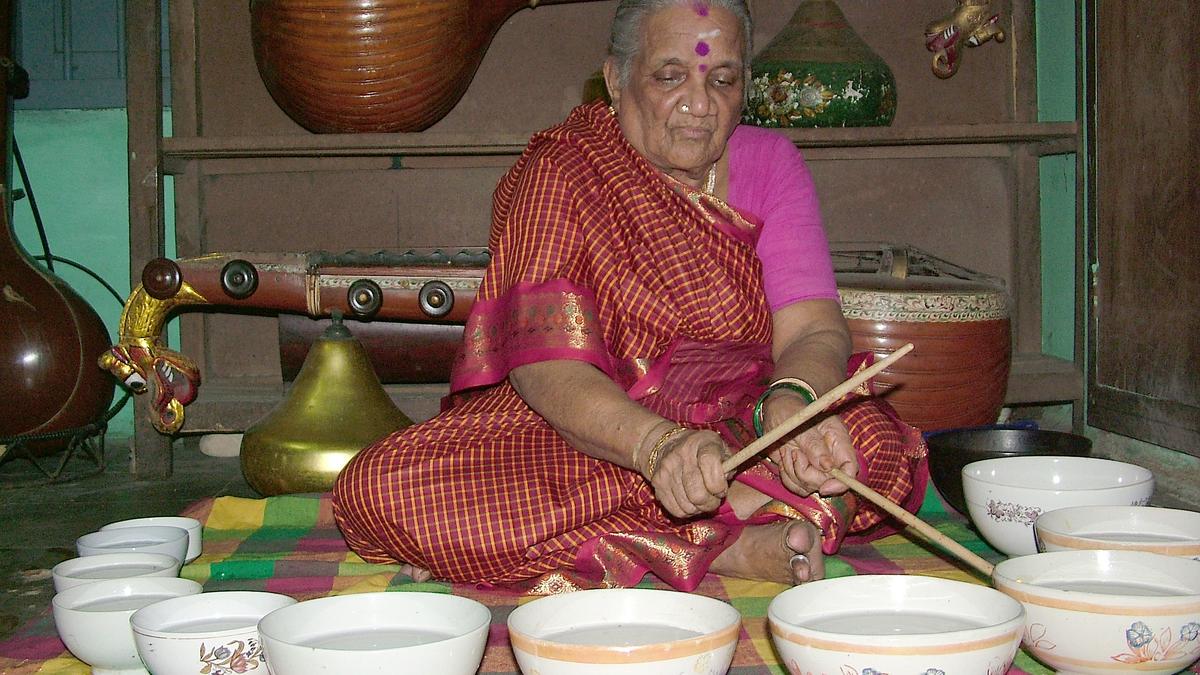
Remembering Seetha Doraiswamy, who broke the glass ceiling with the jalatharangam
The Hindu
Meet Seetha Doraiswamy, who passionately pursued the jalatharangam
In the mid-1930s, a 10-year-old and her elder sister attended a summer music school conducted by musicologist and composer Professor Sambamurthi. The younger sibling Seetha, who was training in Carnatic music from Bhagavathars Seetharama Sharma and Kodaganallur Subiah in Tirunelveli, was fascinated by the jalatharangam, where musical sounds are created by striking varied sizes of water-filled porcelain cups.
Seetha expressed a desire to learn the instrument from exponent Ramaniah Chettiar. He taught it to only a select few, and as a test, asked her to change the raga from Mayamalavagowla to Sankarabharnam. Seetha passed the test, changing the rishabam and daivatham by adjusting the water levels.
The talented child, daughter of illustrious engineer Ganapathy Iyer and Meenakshi, a descendant of Sanskrit scholar Appaya Dikshitar, went on to become Seetha Doraiswamy, a pioneering woman jalatharangam artiste.
Impressed by her dedication, Sambamurthy gifted his porcelain cup set to Seetha. She also learnt the harmonium on her own, and underwent veena training from vidwan Suryanarayana Sastri. Meenakshi was a disciplinarian, and insisted Seetha practise before school. This laid a strong foundation, and Seetha and her elder sister started participating in vocal concerts even when young.
Seetha was married to N. Doraiswamy Iyer at a very young age, and in an era when society restricted women’s movements to within the home, he enrolled his 14-year-old wife in the Teacher’s College of Music, run by The Music Academy. She studied under distinguished maestros during Valadi Krishna Iyer’s tenure as principal, and made history by becoming the first female student to receive a gold medal during graduation for standing first in her course in 1941, and in a college competition.
Seetha taught the veena, vocal music, and jalatharangam for two decades at home while managing 10 children. Her musical odyssey’s turning point came at the age of 41, when she earned a B-high grade from All India Radio in the early 1960s. Her performances in Sarva Vadya kutcheris and AIR’s Vadya Vrinda (multi-instrumental orchestra ) earned her recognition in the Carnatic music fraternity, leading to more opportunities.
Seetha has performed alongside renowned musicians, including violinists Dwaram Mangathayaru, A. Kanyakumari, R. K. Shriramkumar, P.P. Ramakrishnan, mridangists Thanjavur R Kumar, K.V. Prasad, and Ghatam Karthick. Her exceptional performances and pleasant demeanour earned her standing ovations at numerous venues.













